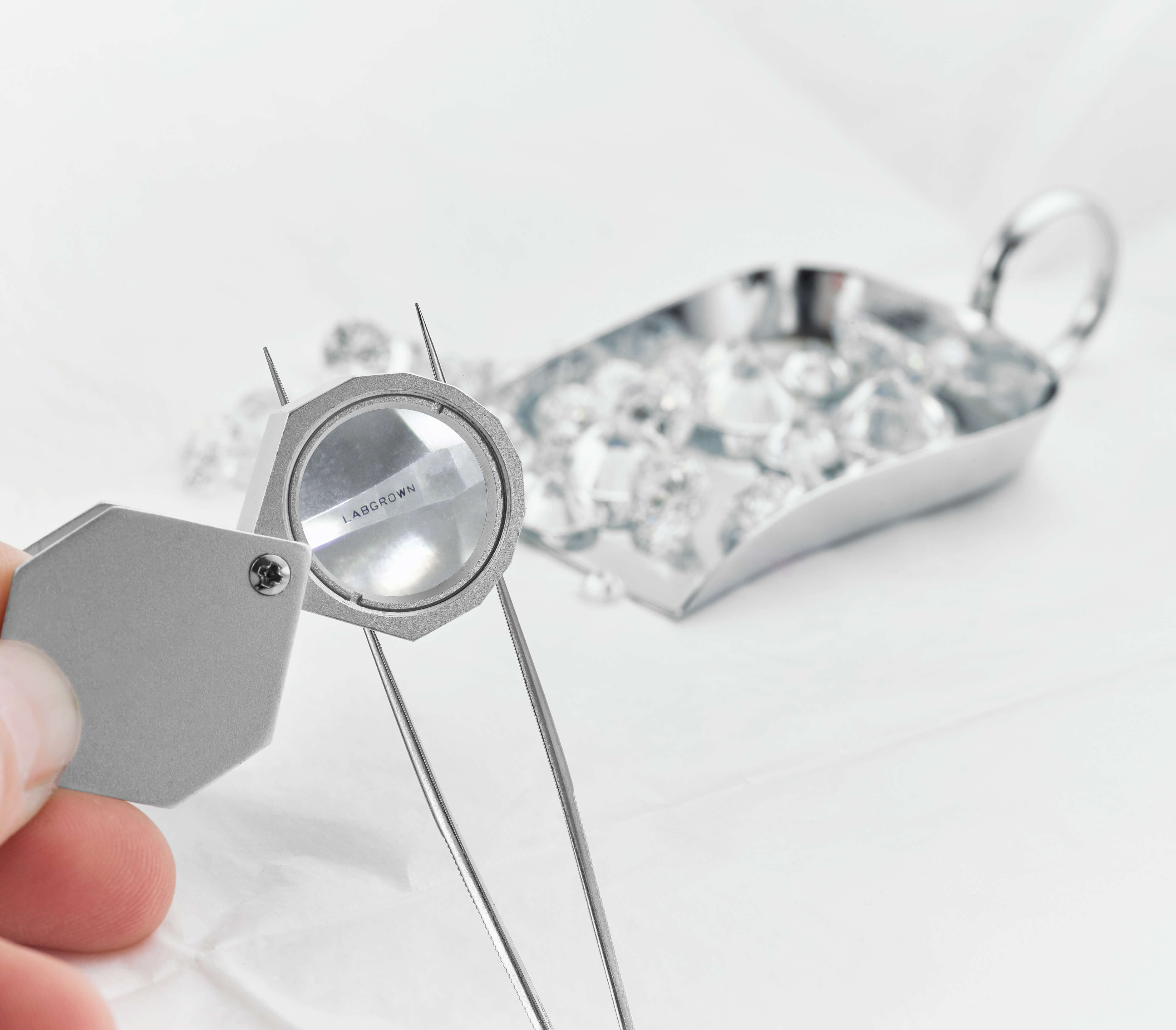Cutting it Close: Facet Structure
We think of diamonds as faceted gems sparkling with light. That's not exactly accurate, or at least how they are initially. They come out of the ground or lab so rough that the average person wouldn't know they were looking at a diamond! It takes the effort and labor of extremely skilled craftspeople to shape, cut, grind and polish the stones, revealing their inherent optical properties.
No other substance exhibits quite the same effect as a finished diamond, whether mined or
lab-created. While the secret is in its
atomic structure, it is the facets of the diamond that allow us to observe the miracle within, and therefore it is the skill of the cutter to reveal it.
Facets are windows into the stone, prisms between the inside and the outside of the diamond, and mirrors on the inside of it. It is precisely because a diamond is able to contain these features together, in a form so enduring, that it is so remarkable a gem. Its atomic structure allows light to pass through at varying angles, reflect within, and bounce around until it escapes, carrying colors out of the stone in a wash of sparkling illumination.
We tend to classify the illumination a diamond gives off in three ways: refraction, reflection, and dispersion, aka its brightness, fire, and scintillation. The white light reflected internally and flowing out of the diamond is referred to as its brightness. Fire is the effect of refraction to produce glinting rainbows of color. The dispersion of light, the flashes of black and white light - that particular diamond sparkle- is scintillation.
In the hundreds of years since developing cutting to maximize light properties, we have made leaps and bounds forward. Some of the cuts today are marvels- minuscule light shows of almost psychedelic intensity. Among "standardized" shapes, while cut may differ from cutter to cutter (hence the grading of cut), there are some basic elements of diamond design that run across the board.
The flat top of a cut stone is called the table. It's the main window, where you gaze into the depths of the stone. In the crown below, facets angle away and down from the table, as the diamond gets wider. Light enters and is trapped inside by the table and crown, reflected back into the interior. The area underneath the crown where the diamond is widest is the girdle. Where it narrows again is called the pavilion, and the bottom point is called the culet (pronounced que-let). The whole measurement from the culet to the table is referred to as the depth.
The proportion and symmetry of the facets are essential to the quality of the light within the stone and therefore are among the most important factors in the evaluation of the diamond. Excellent or Ideal cuts have perfect proportions and symmetry, and may even produce an image when viewed at the right angle.
When a round stone is cut to the highest standard, a wheel of arrows is visible when looking down through the table, and a wheel of hearts when looking up through the pavilion. Other ideal cuts also have recognizable forms. For example, perfectly cut marquise, pear-shaped, and
oval diamonds will display a bow or butterfly in their center when looking down through the table. Can you see the wheel of arrows in the picture?
At Michael Gabriels, all are stones are the highest evaluation of cuts. We are happy to answer any questions you might have.




